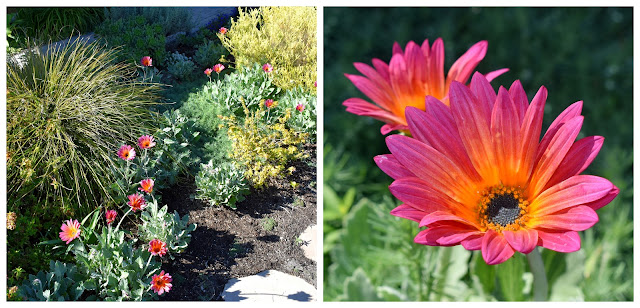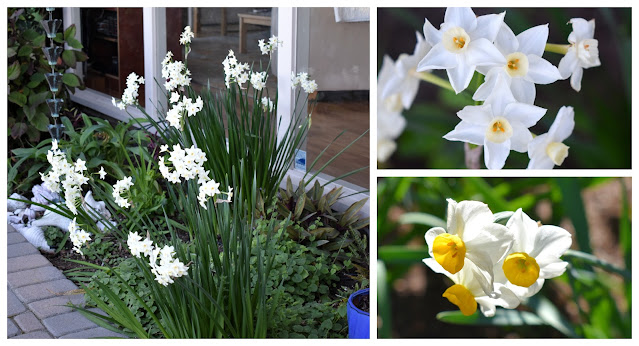It's looking - and feeling - a little more like Spring with every passing day. Much as I appreciate the warm sun on my back as I work in the garden, I'd happily put Spring's advance on hold for awhile if we could get additional winter rain. That said, I'm enjoying the early Spring blooms as they appear.
 |
| This is Anemone coronaria 'Admiral', making its earliest appearance in my garden yet. A few additional blooms of the same cultivar are queued up to follow. |
 |
| After December's heavier-than-usual rain, Arctotis 'Pink Sugar' has responded to January's warmer temperatures with a bounty of blooms |
 |
| The paperwhite Narcissi tazetta usually get a slow start in January but the sheer volume of flowers in both the front and back gardens is greater this year |
A traditionally late winter arrival also showed up a couple of weeks ago and it's rapidly spreading along the property line at the south end of my garden.
If online sources are to be credited, there is more than one genus of wild cucumber but frankly they look identical to me and possess similar characteristics. One of these, Echinocystis lobata, is said to be native to a large part of the US (but not California). The other, Marah macrocarpa, is native to Southern and Baja California. You can read more about California's native the wild cucumber here. For more Wednesday Vignettes, visit Anna at Flutter & Hum.
All material © 2012-2022 by Kris Peterson for Late to the Garden Party



